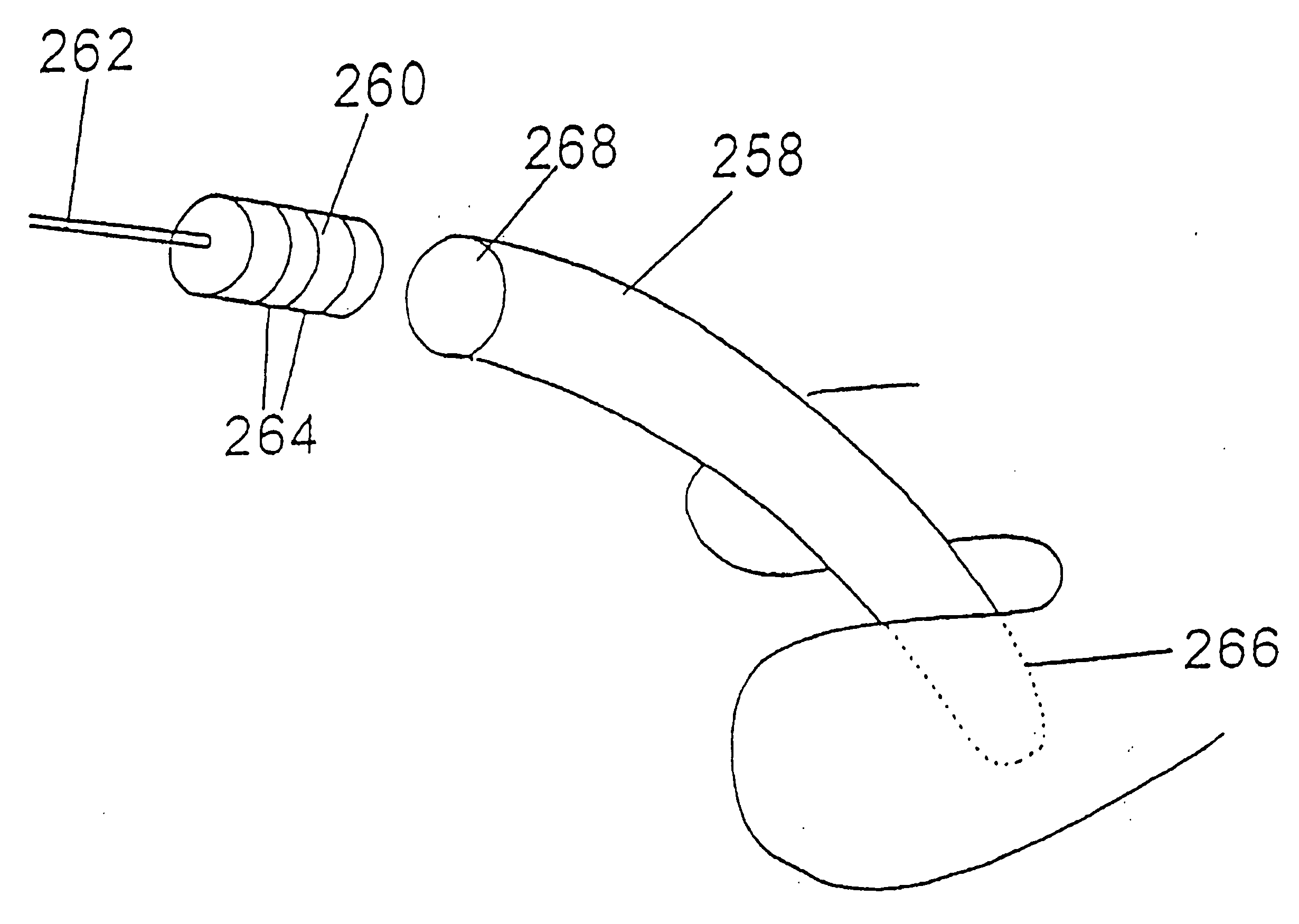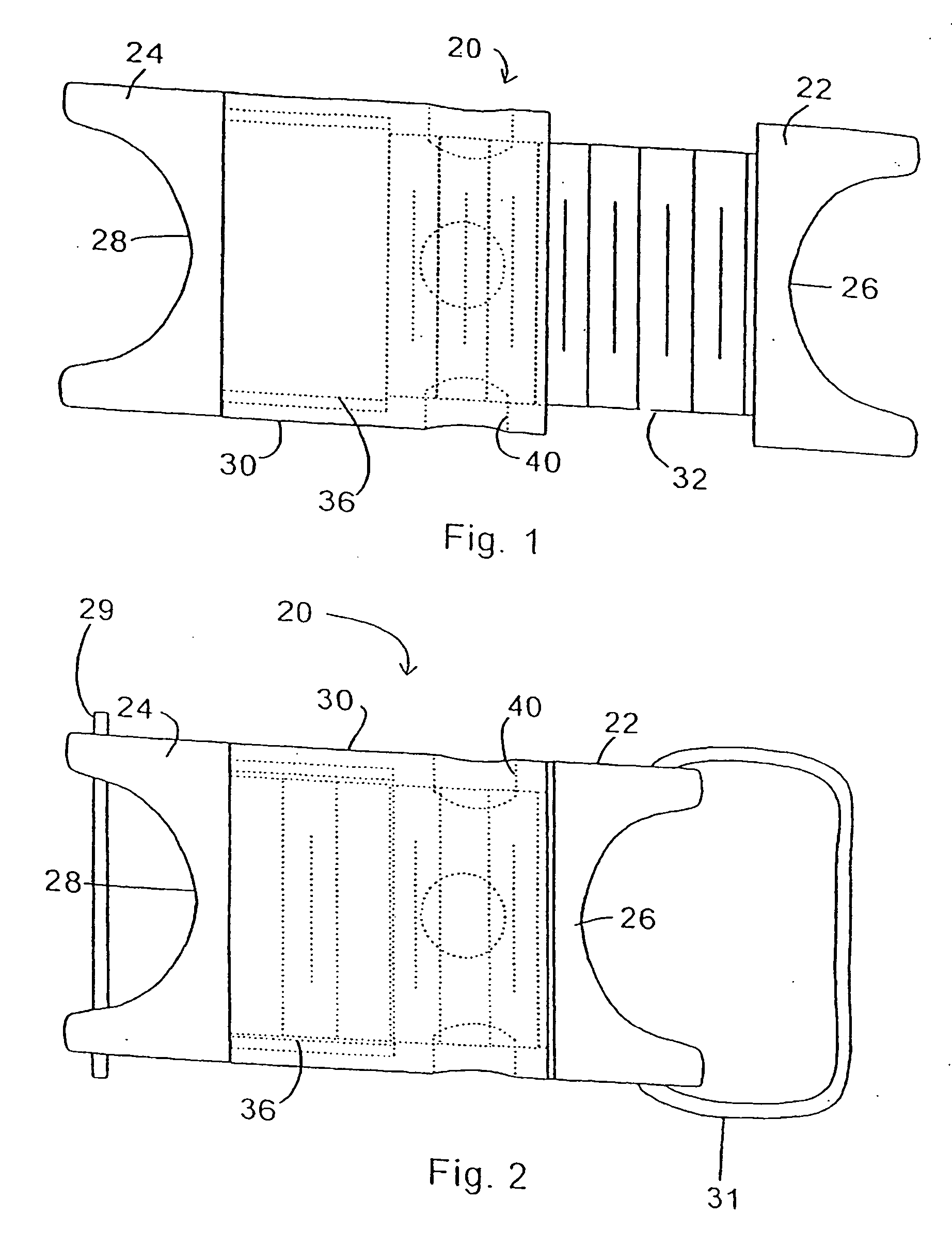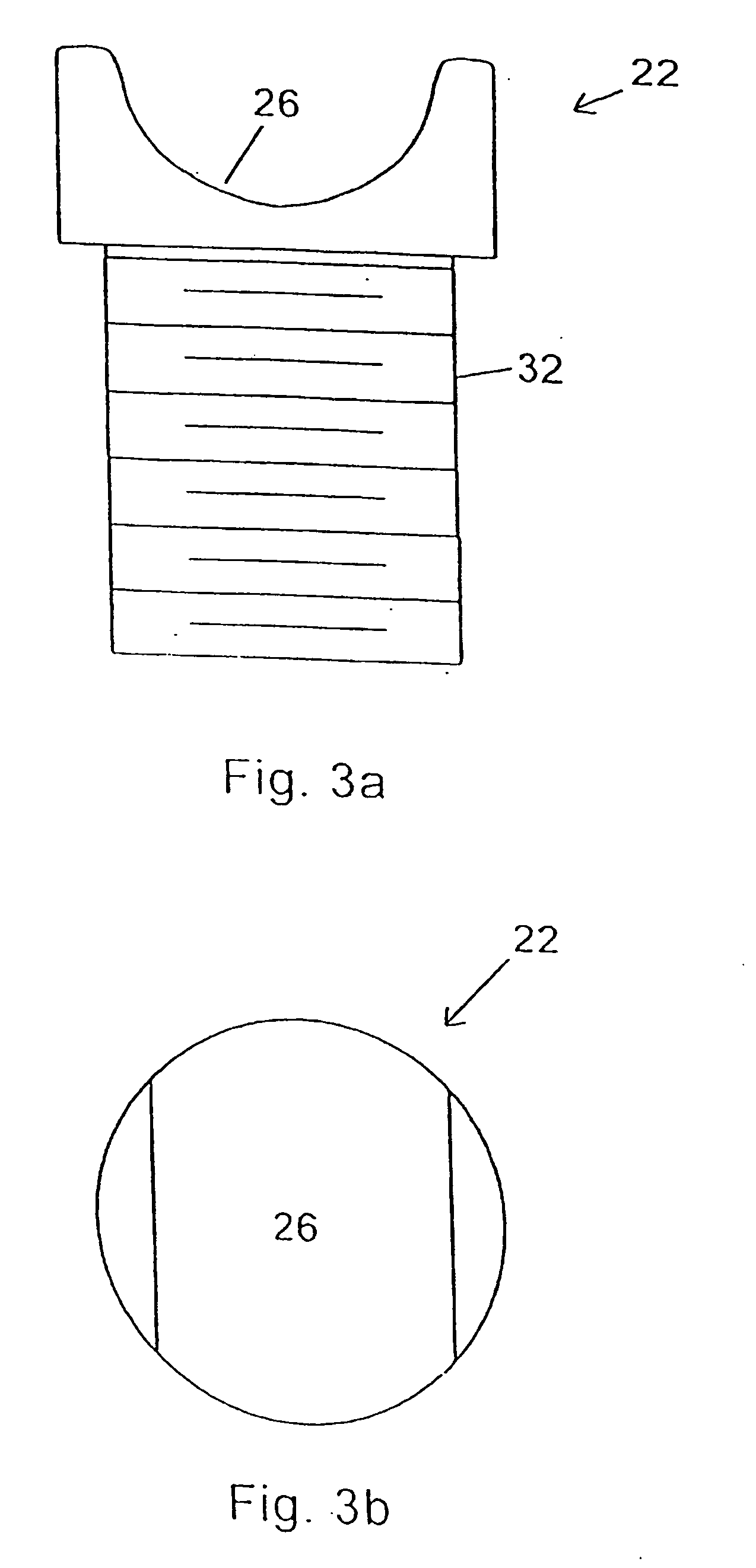Spine distraction implant and method
a technology of implant and dislocation, applied in the field of spinal dislocation implant and method, can solve the problem of being small when compared to other devices and methods, and achieve the effect of reducing trauma, increasing space, and being easily and conveniently secured
- Summary
- Abstract
- Description
- Claims
- Application Information
AI Technical Summary
Benefits of technology
Problems solved by technology
Method used
Image
Examples
first embodiment
[0128] the invention is shown in FIGS. 1-5a, 5b. Implant 20 includes first and second forked ends 22 and 24, each defining a saddle 26, 28 respectively. The forked ends 22, 24 are mated using an interbody piece 30. As can be seen in FIGS. 3a, 3b, the first forked end 22 includes a threaded shaft 32 which projects rearwardly from the saddle 26. The threaded shaft 32 fits into the threaded bore 34 (FIG. 4a) of the interbody piece 30.
[0129] The second forked end 24 (FIGS. 5a, 5b) includes a smooth cylindrical shaft 36 which can fit into the smooth bore 38 of the interbody piece 30.
[0130]FIG. 1 shows the implant 20 in a fully extended position, while FIG. 2 shows the implant in an unextended position. In the unextended position, it can be seen that the threaded shaft 32 of the first forked end 22 fits inside the hollow cylindrical shaft 36 of the second forked end 24.
[0131] For purposes of implantation between adjacent first and second spinous processes of the spinal column, the impla...
embodiment 110
[0144] The embodiment of implant 130 is not circular in overall outside appearance, as is the embodiment 110 of FIGS. 14 and 15. In particular, with respect to the embodiment of implant 130 of FIGS. 16 and 17, this embodiment is truncated so that the lateral side 140, 142 are flattened with the upper and lower sides 144, 146 being elongated in order to capture and create a saddle for the upper and lower spinous processes. The upper and lower sides, 144, 146 are rounded to provide a more anatomical implant which is compatible with the spinous processes.
[0145] If it is desired, and in order to assure that the first member 132 and the second member 134 are aligned, key 148 and keyway 150 are designed to mate in a particular manner. Key 148 includes at least one flattened surface, such as flattened surface 152, which mates to an appropriately flattened surface 154 of the keyway 150. In this manner, the first member is appropriately mated to the second member in order to form appropriate...
embodiment
of FIG. 44
[0169] A further embodiment of the invention is shown in FIG. 44. This embodiment includes a combination insertion tool and implant 290. The insertion tool and implant 290 is in the shape of a ring which is hinged at point 292. The ring is formed by a first elongated and conically shaped member 294 and a second elongated and conically shaped member 296. Members 294 and 296 terminate in points and through the use of hinge 292 are aligned and meet. Through similar incisions on both sides of the spinous processes, first member and second member are inserted through the skins of the patient and are mated together between the spinous processes. After this has occurred, the implant 290 is rotated, for example clockwise, so that increasingly widening portions of the first member 292 are used to distract the first and second spinous processes. When the appropriate level of distraction has occurred, the remainder of the ring before and after the section which is located between the...
PUM
| Property | Measurement | Unit |
|---|---|---|
| height | aaaaa | aaaaa |
| height | aaaaa | aaaaa |
| angle | aaaaa | aaaaa |
Abstract
Description
Claims
Application Information
 Login to View More
Login to View More - R&D
- Intellectual Property
- Life Sciences
- Materials
- Tech Scout
- Unparalleled Data Quality
- Higher Quality Content
- 60% Fewer Hallucinations
Browse by: Latest US Patents, China's latest patents, Technical Efficacy Thesaurus, Application Domain, Technology Topic, Popular Technical Reports.
© 2025 PatSnap. All rights reserved.Legal|Privacy policy|Modern Slavery Act Transparency Statement|Sitemap|About US| Contact US: help@patsnap.com



